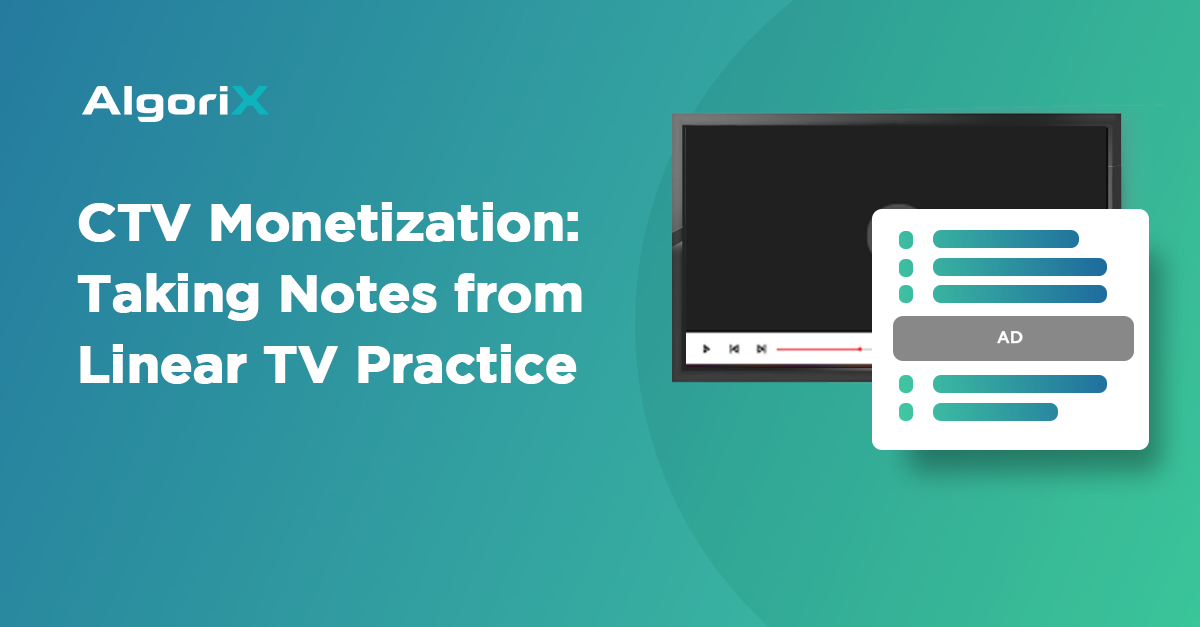The rise of connected TV (CTV) is evident. There’s no question about its ability to captivate a broader audience, specifically when people consume TV at an unprecedented rate. It’s understandable if publishers and advertisers use CTV monetization as part of their strategy. Its advantages are hard to ignore. CTV is far more addressable compared to linear TV. Plus, its audience targeting is much more precise, allowing for increased relevance in messaging.
However, it’s still far from perfect. It still has several issues it needs to address, from fragmentation in inventory and restrictions in frequency to advertising fraud and lack of defined measurements. These drawbacks can be challenging for brands who wish to streamline their purchases and limit ad placement frequency.
Despite using traditional approaches, Linear TV remains relevant for some viewers. Perhaps, it’s time for modern-day advertisers to look back and identify what allowed traditional TV to last this long.
Applying Linear TV Practice in CTV Monetization
Straightforward Buying
One of the issues that continue to plague CTV advertising is fragmented buying. An ad buyer has the freedom to buy from a wide range of sources, from content aggregators to programmatic ad exchanges. While the diversity can be good, ad buying is too dispersed. This makes it challenging for providers to scale.
Take note that audiences of traditional TV want a seamless viewing experience that seamlessly aligns with the programming. As such, they rarely have duplicated ads, which has to do with straightforward ad buying. Unlike CTV ads, there’s no need to go through a tedious process–it’s all contained in one software.
The adoption of walled gardens has made CTV ad buying even more complex. Right now, it’s impossible to manage CTV inventory using a single access point. Buyers must go through hoops of using several platforms, which impacts the brand’s ability to achieve a competitive edge across its CTV ad buys.
Streamlined Measurement
Measurement is important for publishers and advertisers. But, of course, it has to be uniform across all their ads. This is where the edge of linear TV comes from. The industry has long used industry benchmarks to track ad reach. Sure, it isn’t as detailed, but at least it offers a unified form of performance measurement.
Most content aggregators would have their proprietary measurement strategies to identify ad engagement. It’s hard for brands to measure how their ads perform if they run their ads on different platforms.
It’s about time for CTV to develop holistic and unified reporting.
Platforms must have a common language to help brands improve their CTV monetization.
Creating Ads that Stick
Accurate targeting is what CTV advertising takes pride in. It’s how they make sure that no impression goes down the drain. However, this also means that viewing is less shared among the audience–viewers don’t see the same ads simultaneously. It’s personalized, after all.
How can brands address this? By developing ads that stick–taking personalization to the next level.
Advertisers can immerse their target audience in the advertising experience. One, they can use interactive ads to encourage engagement from viewers. Similarly, they can tweak the length of advertisements depending on the audience’s behavior.
Related: 5 CTV Advertising Mistakes to Avoid
Optimizing CTV Monetization
CTV monetization will remain a part of ad strategies for many brands. The level of flexibility it offers, including the manner and timing of delivery, is something brands cannot let go of at this point. However, CTV monetization strategies must continue to evolve and improve. They need to address blind spots to optimize ad performances.
Learn how AlgoriX can help your brand optimize CTV monetization strategies. Contact us today!













